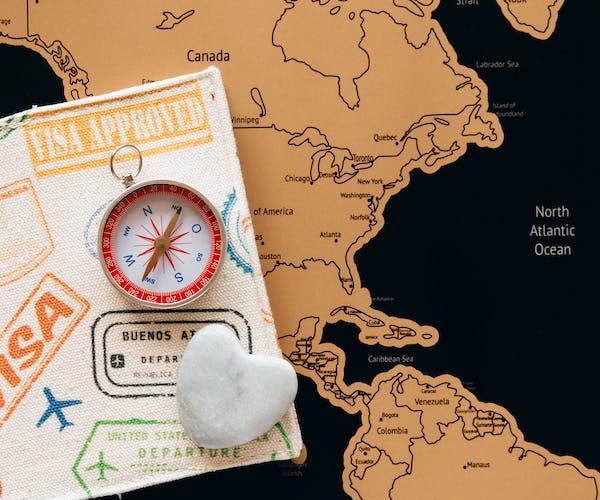
Estonia Schengen Visa – How To Apply
If you’re planning to travel to Estonia and explore its gorgeous spots, you may have to obtain an Estonian tourist visa. This visa is only for countries that aren’t able to travel to Estonia as well as in the Schengen Area without a visa. This visa allows you’ll be able to remain in Estonia for a maximum of 90 days over the course of six months. Additionally, you can travel to other countries that are part of the Schengen Area.
Do I Need an Estonia Schengen Visa?
Schengen Visa Schengen Visa is a travel document that permits visitors to travel and enter throughout The Schengen Area, which includes 26 European countries that have eliminated the internal controls at borders.
Estonia is a member of the Schengen Area, and this means that visitors from certain countries will require the Schengen Visa to enter Estonia.
The need for an Estonia Schengen Visa depends on your nationality, the reason of your visit, as well as the duration the duration of your visit.
Let’s take a look at the elements that determine if you require to get a Schengen Visa for Estonia:
1. Nationality
Certain countries’ citizens have access to visa-free travel within certain countries of the Schengen Area, including Estonia for stays of a short duration (up of 90-days in the 180-day timeframe). This includes those that are European Union (EU) member states as well as those that are European Economic Area (EEA) member states, as well as several other countries that have specific agreements.
2. Length of Stay
If your planned stay in Estonia is longer than 90 days or is for purposes that is not tourism-related (such such as for study, work or a family reunions) You will most likely require a national visa or residence permit but not the Schengen Visa.
3. Purpose of Visit
If the purpose for your visit is family, tourism or medical treatment, or going to sporting or cultural event or sporting event, and you plan to stay in the span of 90 days or less then you may require the Schengen Visa.
4. Visa-Free Countries
People from countries that are visa-free (like those in the EU/EEA members states as well as such as the United States, Canada, Australia and many more) are allowed to travel to Estonia for short-term stays with or without the need for a Schengen Visa.
5. Visa-Required Countries
People from countries that aren’t visa-free require the Schengen Visa to enter Estonia for a short stay. This requires making an application for the visa to an Estonian consulate or an embassy in your country of residence.
To determine if you require a Estonia Schengen Visa, you must take into consideration your nationality and the purpose for which you are visiting. It’s crucial to know that, even if from a country that is visa-free it is necessary to meet specific entry requirements when crossing the borders, like possessing a valid passport, enough funds to cover your stay, as well as an onward or return ticket.
Keep in mind that visa rules are subject to change, so it is recommended to visit on the website for the Estonian consulate or the embassy in your nation to find the most up-to-date and current information on visa conditions.
How To Apply For Estonia Schengen Visa
Making an application the Estonia Schengen Visa can seem intimidating, but with the proper preparation and a thorough understanding of the procedure it is possible to manage.
It is the Schengen Visa allows you to travel to Estonia as well as other countries in the Schengen Area for short stays for up to 90-days within a 180-day duration. This is a complete guide on what you need to do in order to get Schengen Visa for Estonia. Estonia Schengen Visa:
1. Determine the Visa Type
First, determine what kind that Schengen Visa you need based on the reason for your trip. The most common categories are family, business, tourist visit, medical care, and sporting events that are cultural or sports-related.
2. Check Eligibility
Check if you require the Schengen Visa based on your country of citizenship. The citizens of EU as well as EEA state members in addition to some other countries with agreements generally don’t require to obtain a visa for short-term stay. Visit the Estonian consulate or embassy’s website to find a list of visa-free countries.
3. Gather Required Documents
Take the required documents that you require, which typically includes:
Completed Schengen Visa application form.
A valid passport must have at minimum two blank pages and a validity that is at least 3 months beyond the date of your intended return.
Passport-sized photos meeting Schengen Visa photo requirements.
The itinerary for travel includes details on accommodations, flights and excursions.
Insurance proof for travel that covers medical costs and repatriation up to at least EUR30,000.
A proof of accommodation like bookings at hotels or an invitation from the hosts in Estonia.
Evidence of financial capability such as bank statements to prove that you are able to pay for the costs of your stay.
Proof of employment or student status.
A cover letter describing the purpose the trip has, the planned itinerary, and the method you’ll use to finance your trip.
4. Make an Appointment
Check out the official site of Estonian consulate or embassy. Estonian consulate or the Estonian embassy in your country to book an appointment. Reservations should be made ahead of time, since there may be a waiting time in particular during the peak travel season.
5. Attend the Appointment
When the date is set visit your consulate, or the embassy to make an appointment. Bring all the documents you need and an the application form in a physical format. Consular officers could inquire about your visit and will check the authenticity of your documents.
6. Biometric Data Submission
In the majority of instances, you’ll have to provide biometric information (fingerprints and a photo) to the consulate embassy at your visit. This information is required for identification verification.
7. Pay the Visa Fee
You must pay for the Schengen Visa fee as specified by the consulate. Keep the receipt for payment in case it is required in the process of applying.
8. Wait for Processing
The processing time is different, but it generally takes about 15 days. In this time consulate officials will examine your application and documents as well as conduct background check.
9. Receive the Visa Decision
When a decision is taken after which you’ll be informed. If your visa has been approved the visa will be attached on your passport. If it is denied, you’ll be sent an explanation of the reason for the rejection.
10. Collect Your Passport
If your visa has been approved you can collect your passport along with the visa at the consulate or embassy.
11. Plan Your Trip
Once you have you have your Estonia Schengen Visa in hand You can now make your travel plans, making sure that you stick to the dates stated on the visa.
Keep in mind that the requirements for visas and procedures are subject to alter, so you should always visit the website for the Estonian consulate or the embassy in your country to get up-to-date and precise details. It is crucial to begin the application process ahead of time to be prepared for any unexpected delays or other conditions.
Frequently Asked Questions
Do I have to make an application to get the Estonia Schengen Visa if I’m planning to visit several Schengen countries?
Yes, you are able to request an Estonia Schengen Visa if Estonia is your main destination, or the one you’ll spend the majority of your time within during your travels.
Conclusion
The process of making an application for the Estonia Schengen Visa involves gathering necessary documents, going to an appointment, and waiting for an answer. Be sure to provide accurate information and adhere to the procedure to make sure you have an effective application.
